
Let's talk Catalan Sheepdogs
Like many dogs who watch over flocks of sheep, the Catalan Sheepdog is vigilant, attentive and intelligent, traits they’ll bring inside your home as well. As a herder, the breed is naturally very active so a great fit for active owners. Their upstanding demeanour translates to their human flock, with whom they’re very gentle, most of all the youngest ones. Once introduced and trained around children, especially from the start, the breed will be hard to beat. Watch their eagerness unfold with most any task, whether it’s work or play.Official name: Catalan Sheepdog
Other names: Catalan Shepherd, Catalonian Sheepdog
Origins: Spain

| Drooling tendencies: |
|
Warm weather? | |
| Shedding level: | 
|
Suited to apartment living? | 
|
| Energy Level (high, low, medium) *: | High | Family Pet?* |
|
| Compatibility with other pets: |  |
Can stay alone?* |
* We advise against leaving pets alone for long stretches. Companionship can prevent emotional distress and destructive behaviour. Speak to your veterinarian for recommendations.
Every pet is different, even within a breed; this snapshot of this breed’s specifics should be taken as an indication.
For a happy, healthy and well-behaved pet, we recommend educating and socialising your pet as well as covering their basic welfare, social and behavioural needs.
Pets should never be left unsupervised with a child.
All domestic pets are sociable and prefer company. However, they can be taught to cope with solitude from an early age. Seek the advice of your veterinarian or trainer to help you do this.
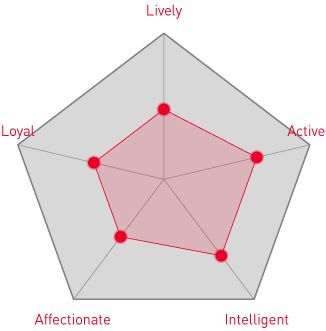

| Baby age: | Birth to 2 months |
| Puppy age: | 2 to 12 months |
| Adult age: | 1 to 7 years |
| Mature age: | 7 to 10 years |
| Senior age: | From 10 years |
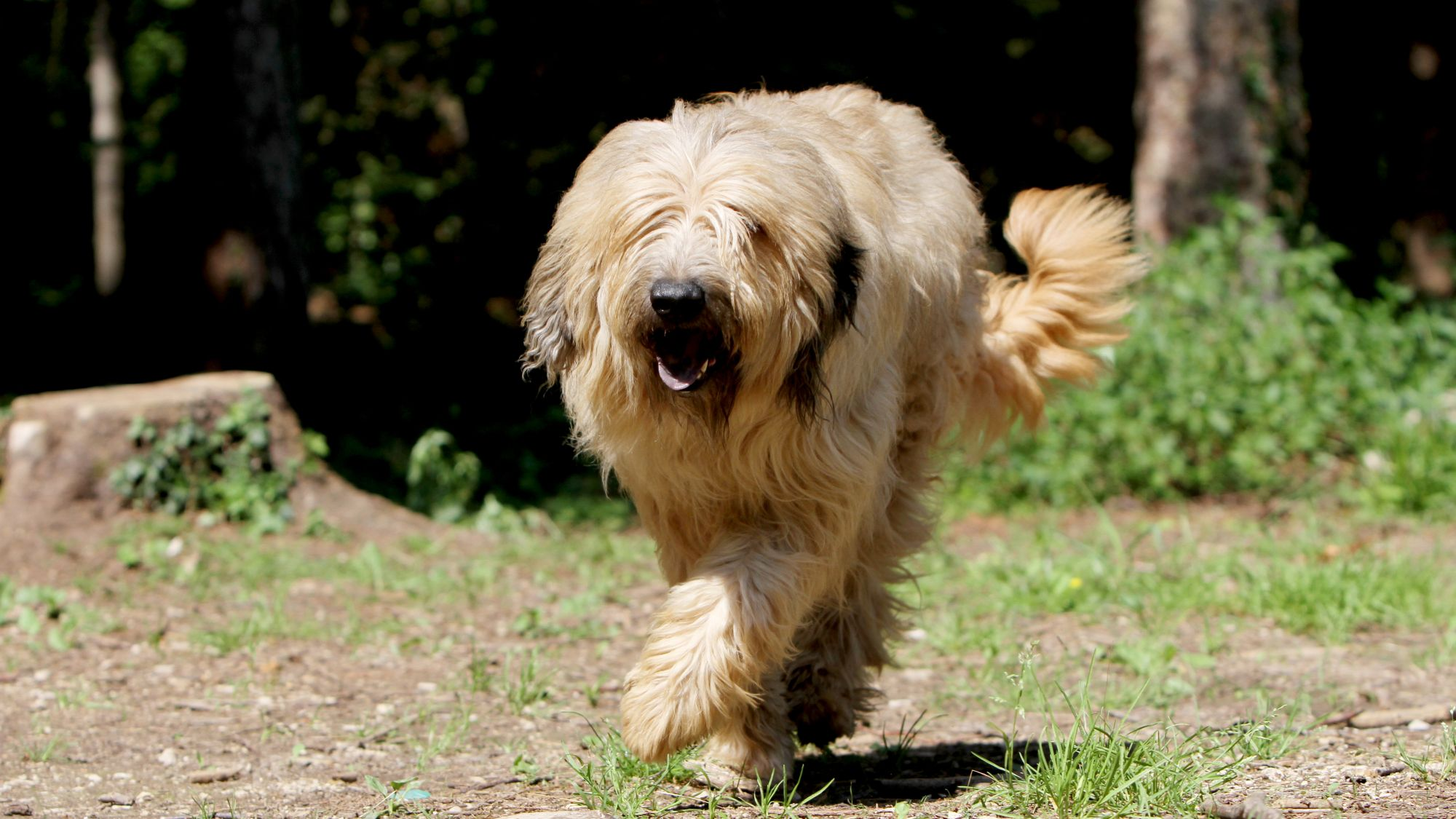
1/7
Get to know the Catalan Sheepdog
All you need to know about the breed
Expect exemplary behaviour, nonstop energy, and an upbeat attitude from the Catalan Sheepdog. This rustic breed is canine-convivial with a zest for life and a willingness to partake in any activity at hand.
Their undulating shaggy coat and nonplussed outlook might cause one to think the Catalan Sheepdog a buoyant breed. That’s because they are: The dogs are known for their incredibly affable manner. Raised in the Pyrénées steep passages, they learned to be earnest and alert while herding sheep. They are loyal and hard-working, whether you keep the Catalan Sheepdog as a working dog or a household pet.
Another plus for the breed: A relatively healthy constitution. Joint issues may be problematic for the Catalan Sheepdog as they age, simply a result of their energetic lifestyle.
And they’re super smart. Years in the field means the Catalan Sheepdog has an aptitude for taking direction, a plus for training them. They are most content when at work and following your lead.
All in all, the Catalan Sheepdog will make their way into the family unit with ease, known to be patient and kind when it comes to little ones, once they are trained around them, of course. Expect a faithful sidekick when it comes to this engaging breed.
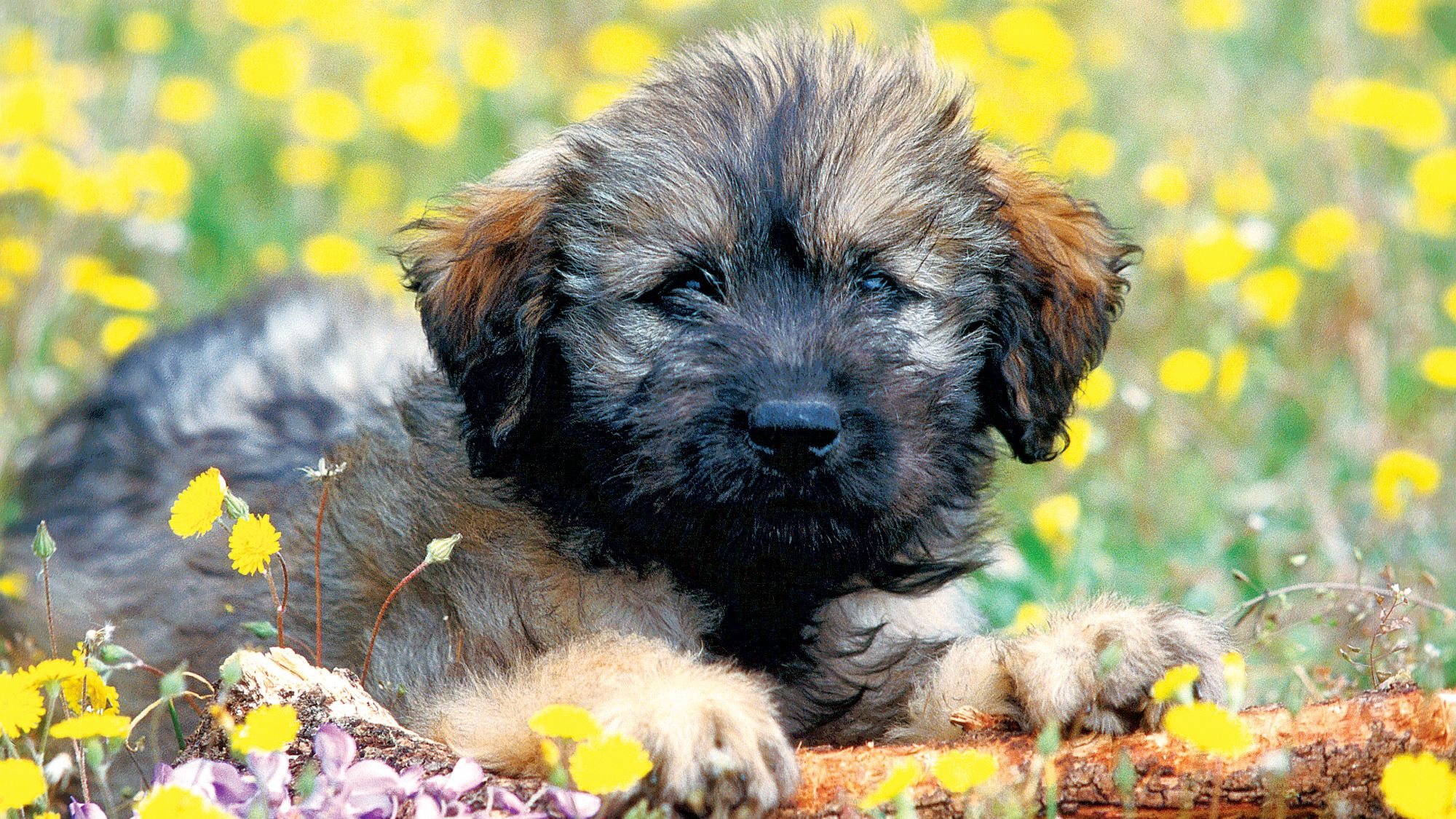
2/7
2 facts about Catalan Sheepdogs
1. A dogged pursuit
Those who wish to add the Catalan Sheepdog to their family will need to keep at it: The breed gives birth typically to only three to four puppies per litter so their numbers are usually fairly low. They are also still recovering from near-extinction in the 1970s, although thankfully, United Kennel Club registrations are on the upswing.
2. A breed for the ages
The Catalan Sheepdog breed is a familiar face after being featured in the Eighties classic Back to the Future. The sidekick of main character Doc, the dog was appropriately named Einstein after their real-life trait of being a highly intelligent breed. Celebrated for a whole host of attributes, it’s largely their ability to listen and smartly follow up that keeps the Catalan Sheepdog in demand.
History of the breed
The Catalan Sheepdog breed hails from the Pyrénées Mountains in Catalonia, the region at the very northeast tip of Spain separating it from France. The precipitous passages there have traditionally been home to vast flocks of sheep, which populations depended on for their livelihood. In turn, they demanded a trusty flock driver and guardian dog to keep their charge in line. The Catalan Sheepdog was it.
Their affable nature helped the Catalan Sheepdog to thrive there, it’s said from the Middle Ages, with the Bergamasco Shepherd as their probable ancestor. During the World Wars and the Spanish Civil War, the breed was used as a messenger dog. With wavering agricultural conditions in the mid-20th century, the Catalan Sheepdog breed was almost extinct as of the 1970s. Organised breeding programs by enthusiasts in the Catalan region helped to revive the dog.
The breed was recognised by the United Kennel Club in 2006 and the UK Kennel Club in 2009.

4/7
From head to tail
Physical characteristics of Catalan Sheepdogs
1. Ears
Thin, triangular-shaped fringed ears, set high on head.
2. Coat
Abundant coat of rough and long hair, especially around face, either straight or wavy.
3. Body
Robust yet agile body, strong and straight in form.
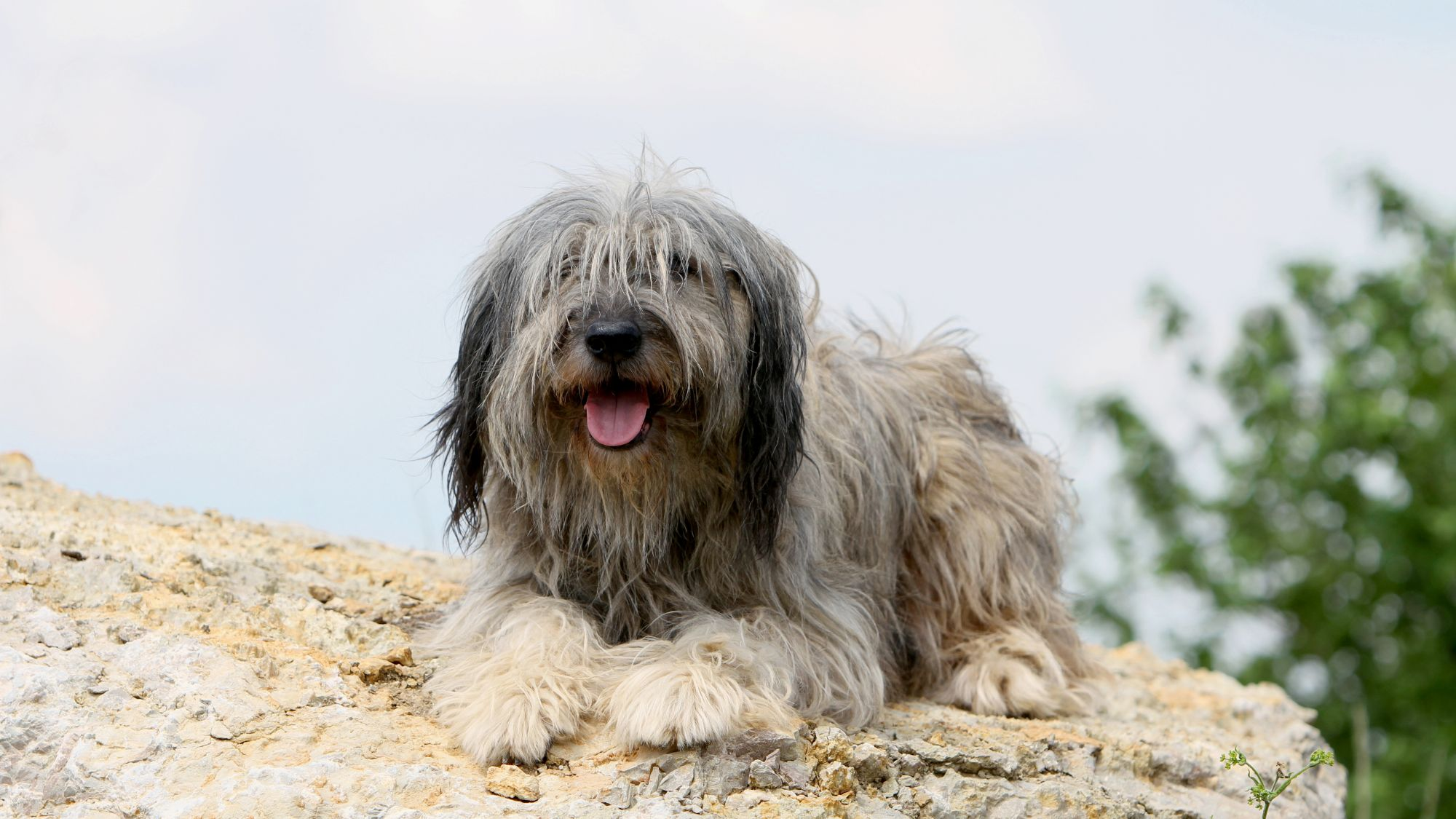
5/7
Things to look out for
From specific breed traits to a general health overview, here are some interesting facts about your Catalan Sheepdog
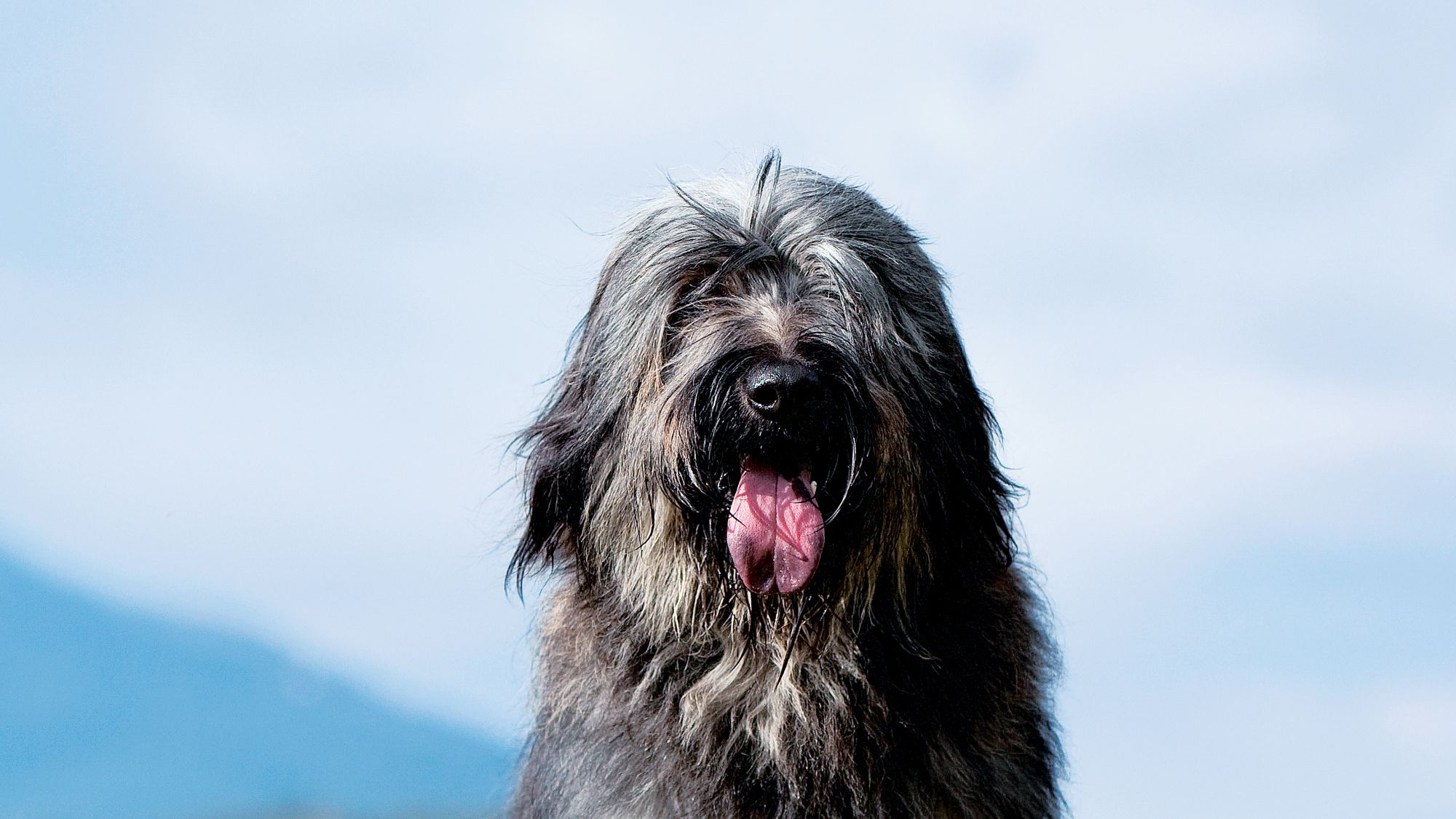
6/7
Caring for your Catalan Sheepdog
Grooming, training and exercise tips
Lucky for their owners, the Catalan Sheepdog’s profuse covering is weatherproof and largely takes care of itself. Combing their hair several times a week to keep tangles under control is enough. As a dog who may spend a lot of time outside, they are bound to get dirty, but bathing or brushing them too much will break down their fur’s natural weather protection. Teeth should be brushed daily if possible, nails trimmed when necessary, and ears checked regularly for debris. Lots of exercise is a given for the Catalan Sheepdog; as a herding breed, they’re tireless. They enjoy walks and even runs, and playtime is anytime as far as this breed is concerned. A naturally upbeat attitude makes the Catalan Sheepdog a very easy breed to train. They get along splendidly with everyone at home, including children (once trained to be around them). Taking commands then is a no-brainer for this affable dog, albeit those delivered firmly. The Catalan Sheepdog is very intelligent so any obedience sessions will usually produce great results.7/7
All about Catalan Sheepdogs
The long locks of the Catalan Sheepdog‘s double coat are fairly easy-care, and will shed fully twice a year in the fall and spring—when they are known to “blow” their coat. The odd part: The front half of the coat falls out first, followed by the back half. How very orderly of them!
With a reputation as a gentle and calm breed, it’s no surprise that the Catalan Sheepdog gets along well with other animals, including cats if raised alongside. The breed enjoys being part of the family and as a sheep herding dog, is naturally watchful of all those in their midst, including feline friends.
translations.feature.breeds.otherbreeds
Read more on this topic

How your dog's nutrition needs change with age

How to adopt a dog

Things to consider before getting a dog
Sources
1 - Veterinary Centers of America https://vcahospitals.com/
2 - Royal Canin Dog Encyclopaedia. Ed 2010 and 2020
3 - Banfield Pet Hospital https://www.banfield.com/
4 - Royal Canin BHN Product Book
5 - American Kennel Club https://www.akc.org/


